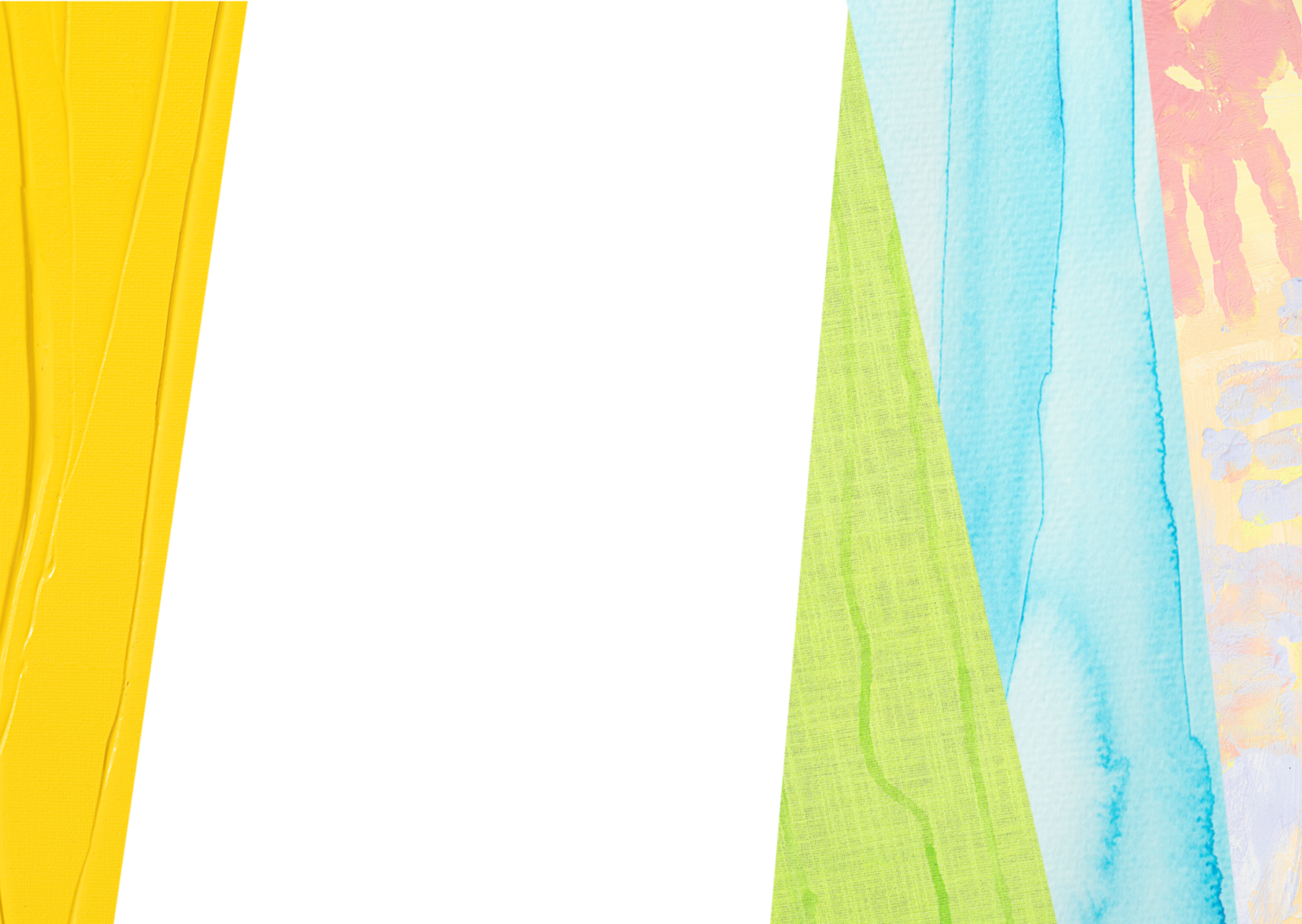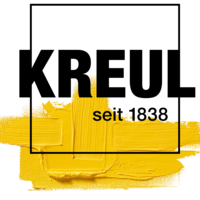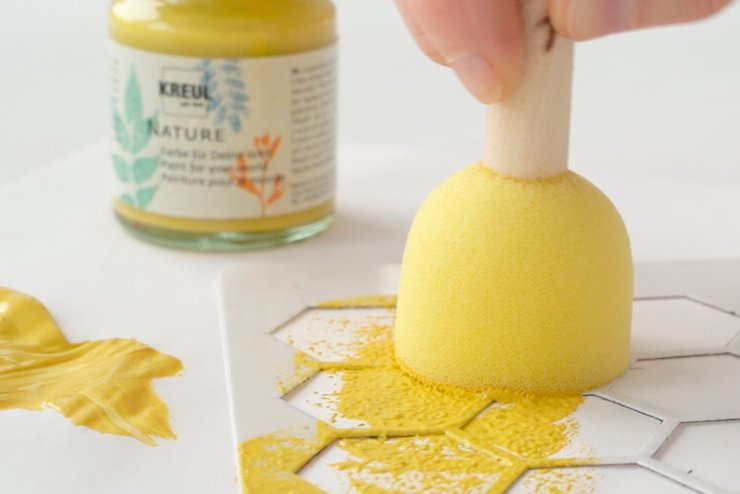
Colour of the month: Yellow
04/12/2023 |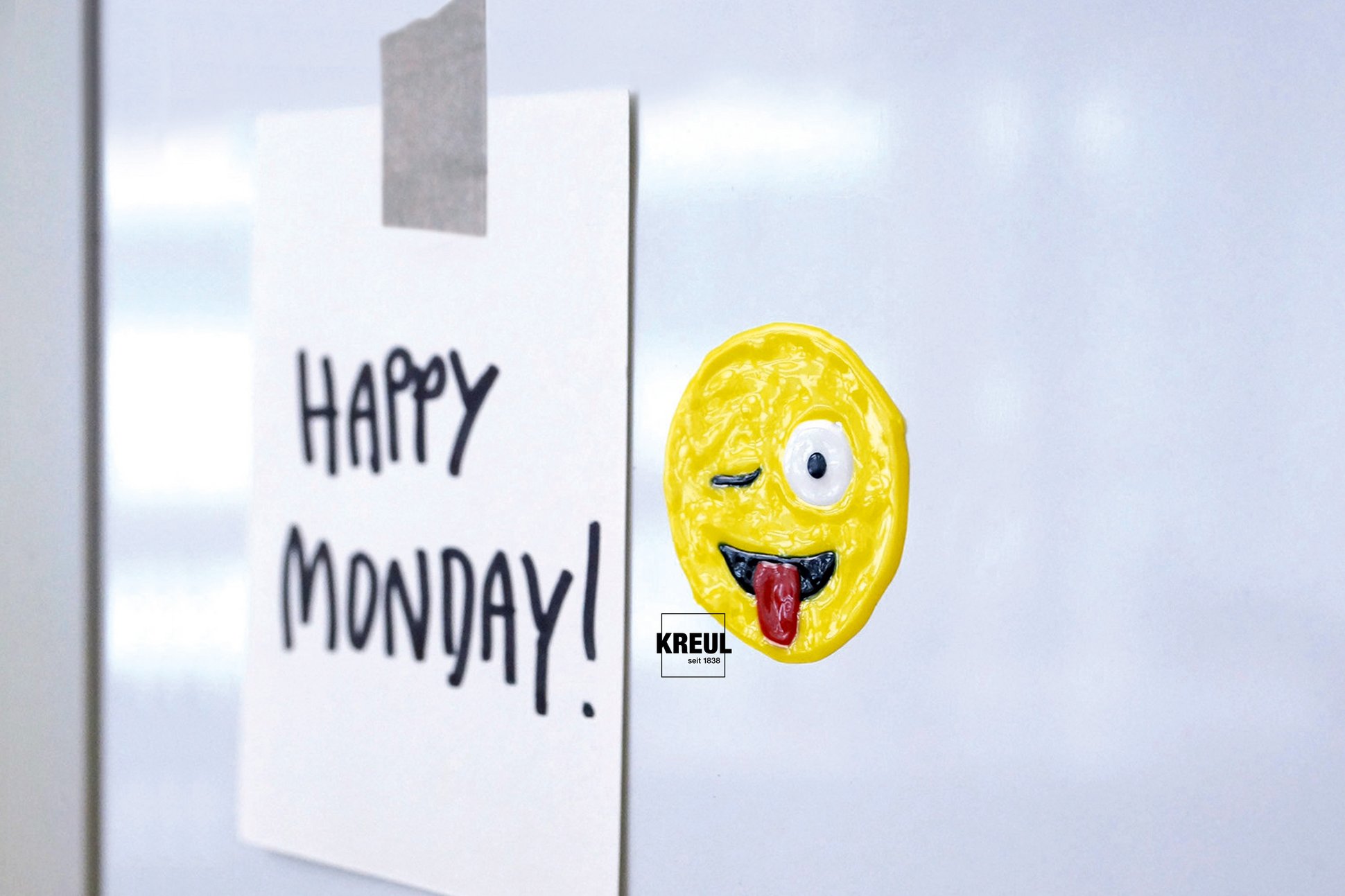
Yellow makes you happy and alert
In our mind, we immediately associate radiant yellow with the sun. Its light and warmth has a positive effect on our mood after the long grey winter months. Yellow therefore symbolizes optimism, lightness and calm. In rooms painted yellow, people become especially communicative. The colour stimulates us, making us more attentive. Some street signs, New York taxis and post-it notes aren't bright yellow for nothing. The colour is also enormous fun. After all, we use it almost daily to convey our mood with yellow emojis with a twinkle in our eye.
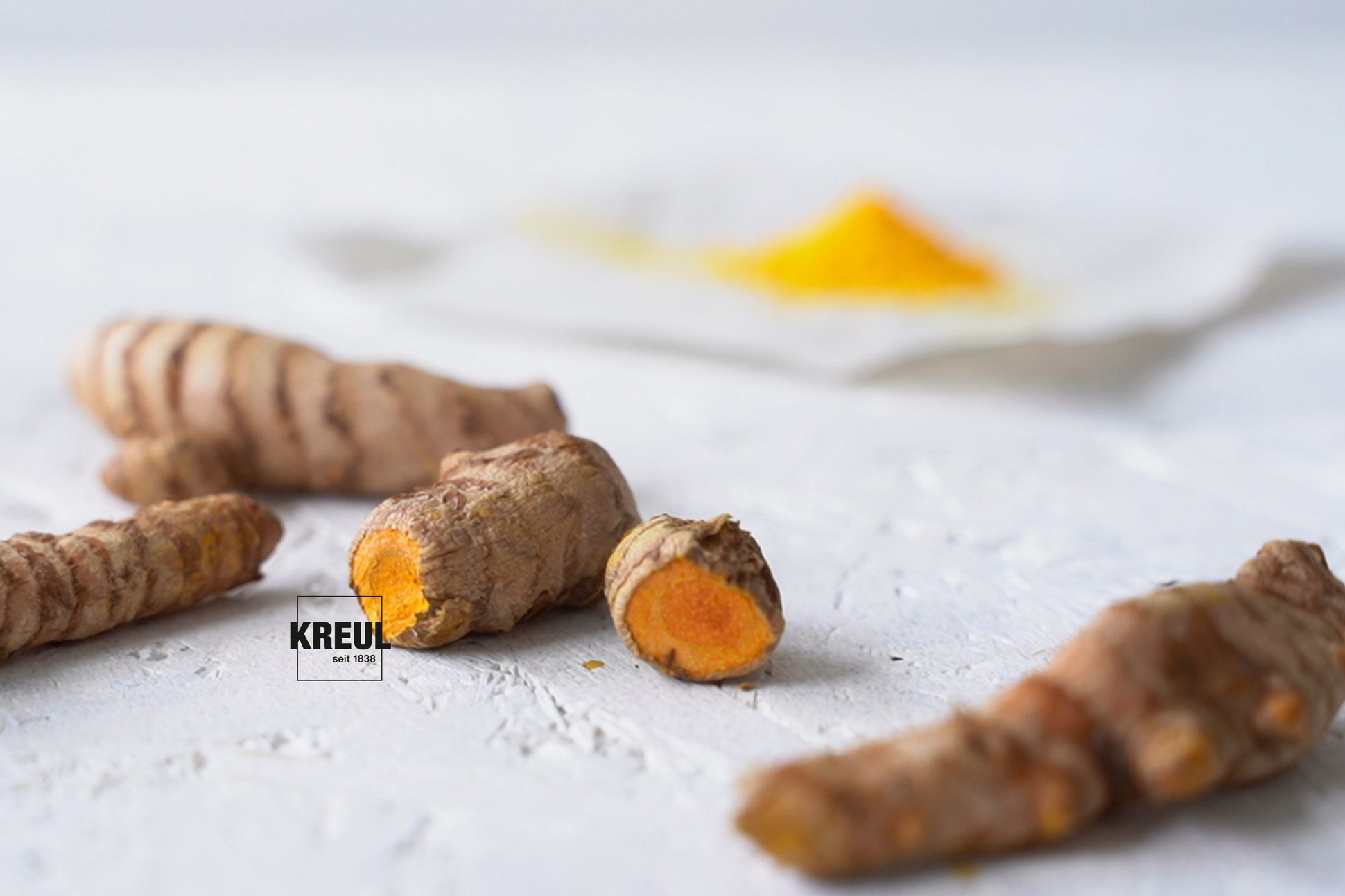
From sunflower yellow to curcuma yellow
Alongside blue and red, yellow is one of the three primary colours in the colour circle. In printing technology, too, yellow is a basic element in the CYMK colour model. This makes it a starting colour that can be mixed to make many other colours. Yellow is needed to mix brown, green or orange shades.
The colour yellow comes in many guises. In nature, we meet the colour as dark curcuma yellow, warm beeswax, cool lemon yellow, summery sunflower yellow along with many other nuances. So it's natural that artists also want a wide palette of yellow shades. In SOLO GOYA Triton Acrylic line, we include the colours Genuine Yellow Light, Cadmium Yellow, Lemon and Maize Yellow.
In KREUL Triton Acrylic Natural Pigments, the colour Curcuma is available. It contains a dye that has already been used for centuries in India, the curcuma plant. The pigment is made from ground curcuma root that has been previously boiled and dried. The orange-yellow curcuma powder is a vegetable alternative to other yellow pigments. Fabrics dyed with curcuma are traditional in Asia, although the colour is only light-fast to a certain extent.
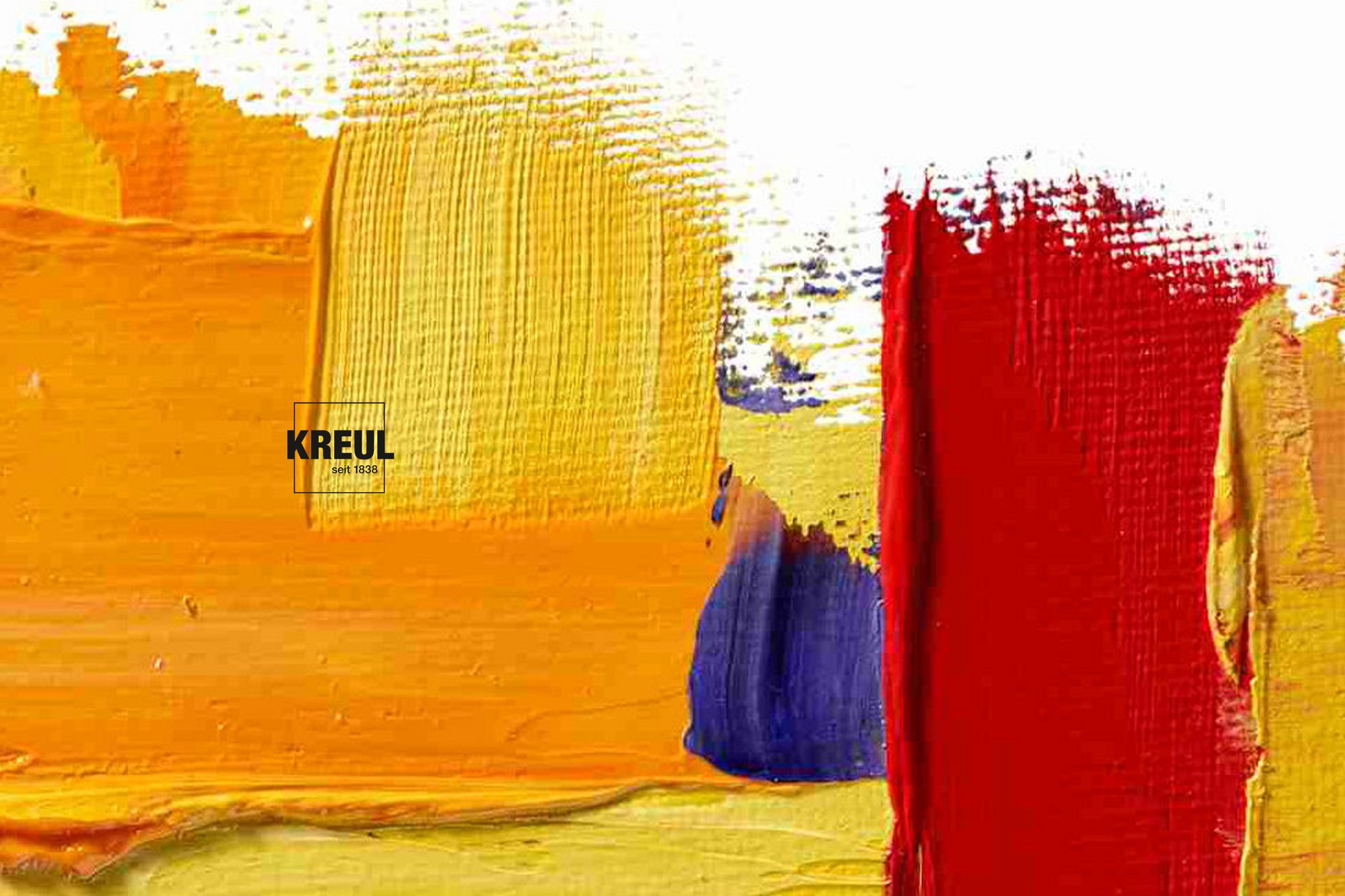
Yellow in art painting
In India, Indian yellow was developed in the 15th century. Around 200 years later, it arrived on the art scene in Europe. For a long time, people puzzled from which substances the dark, light-fast yellow was made up. Finally, a letter revealed that it came from the urine of cows that had been fed exclusively with mango leaves. Today, however, the pigment for this colour is produced synthetically.
In Europe, Indian yellow fascinated the painter William Turner. The colour was shipped in the form of dried pellets. From these, a watercolour in bright yellow was prepared. You can see this shade in many of William Turner’s painting. Other famous artists used yellow shades in their artwork. Henri Matisse, for instance, like to paint lemons. By combining yellow with its complementary colour violet, he really made the colour glow. Vincent van Goghs' sunflowers on the other hand appear brownish. But originally, the artist used yellow colours to paint his favourite motif. But unfortunately, these were not light-fast, which is why the once radiant yellow sunflowers have faded today.
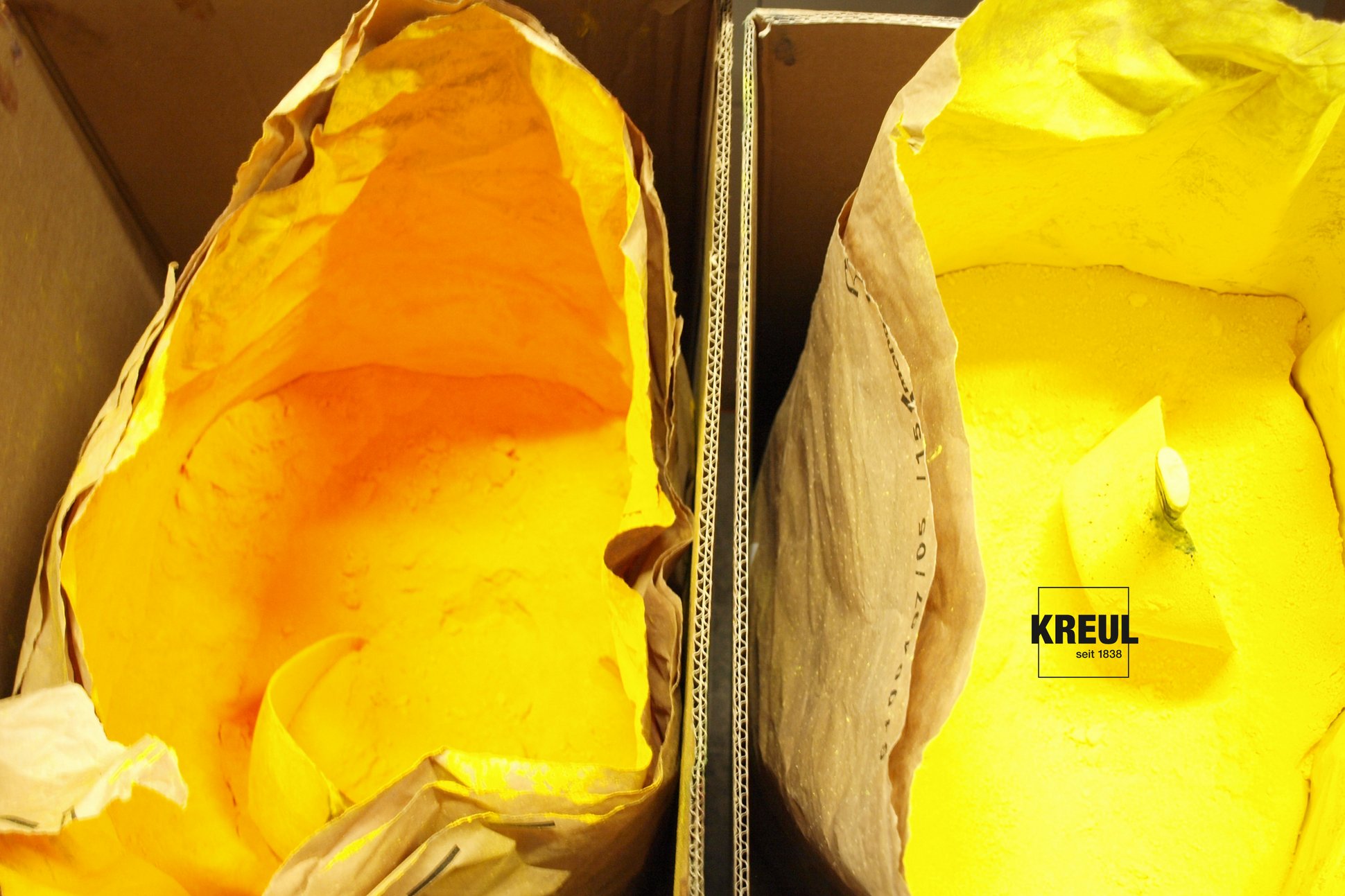
A pigment with a history
Light-fast yellow pigments have been around to buy only since the 20th century. Previously, poisonous lead yellow, arsenic yellow or chromium yellow were used in art. At the end of the 19th century, the synthetic alizarin and azo pigments came on the scene.
Monazo pigments are also used in the yellow colours of SOLO GOYA Acrylic. To produce our Genuine Yellow Light and Cadmium Yellow paints, we use the pigment Yellow 1. This pigment has been available on the market for over 100 years and was patented in 1909 – as the first organic yellow pigment available for paint production in industry. The yellow pigments previously used were either toxic or expensive. Pigment 1 was therefore a fantastic advance. It has good light fastness and provides semi-transparent to semi-opaque coverage.
Material
SOLO GOYA Triton Acrylic
KREUL Triton Acrylic Ink Natural Pigments
KREUL Triton Acrylic Marker medium Natural Pigments
SOLO GOYA Acrylic
KREUL Nature
